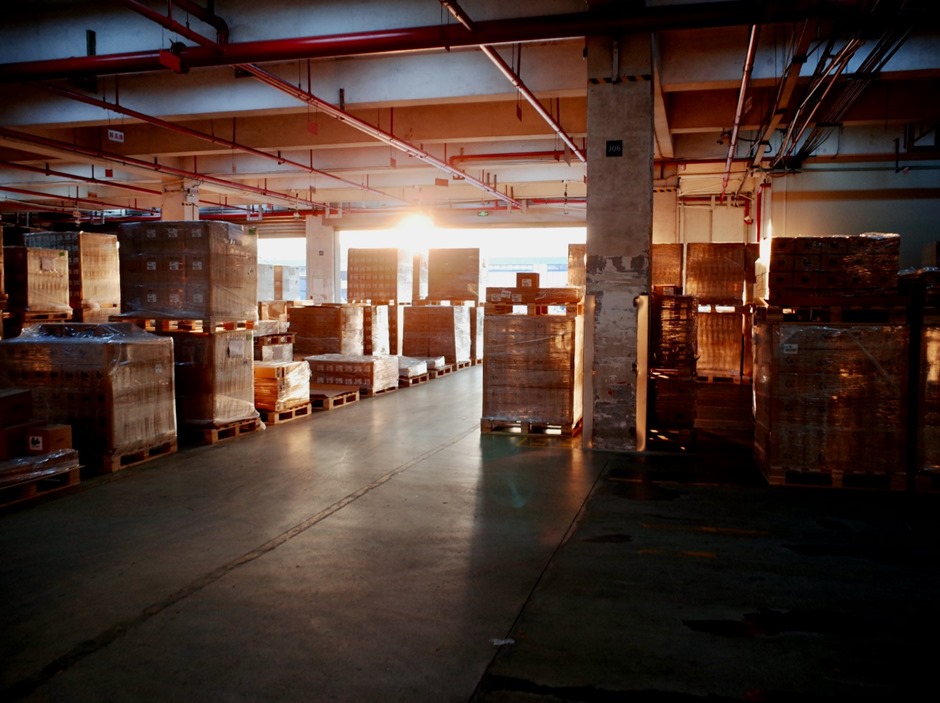I used to dread inventory checks during my time in the warehouse. There’s something uniquely soul-crushing about digging through a pile of identical boxes trying to find the one that’s off by a single SKU number, especially when the only “system” in place is a half-updated Excel sheet.
But the warehouse workers in my company today have it easy; the contrast is honestly ridiculous. They’ve got robots zipping around floors, barcodes practically reading themselves, and data that actually makes sense. What changed is that we got ourselves a warehouse management system (WMS), and I swear it was like giving the warehouse a brain transplant.
Now, if you’ve never had to run or manage a warehouse, that might sound dramatic. But if you have, then you know exactly what I’m talking about.
So let me break down what a WMS actually is, why it’s more than just a fancy spreadsheet, and how it genuinely transforms warehouse efficiency.
WMS 101
A warehouse management system (WMS) is software that controls warehouse operations from the moment goods enter the facility to the moment they are shipped out.
It’s like an omniscient warehouse manager who never sleeps or misplaces a pallet and can predict inventory issues before they happen. It also ties together inventory tracking, order fulfillment, labor management, shipping logistics, real-time data reporting, and integration with other systems, such as your ERP or CRM.
Where My Warehouse Went Wrong
Before we had a WMS, our warehouse was basically operating on a combination of muscle memory, duct tape, and pure willpower. People relied on “the usual spots” to find things, and order picking was essentially a scavenger hunt.
The problem was that we had no visibility. I had no real-time sense of inventory levels. Orders were delayed because we didn’t even realize we were out of something until the picker came back empty-handed. And don’t even get me started on the nightmare of managing returns.
Structure, Automation, and Real-Time Data
When we finally pulled the trigger on a WMS, the first thing I noticed was how quickly everything snapped into place.
Suddenly, we had structured locations. Every bin and pallet were accounted for. Picking routes were optimized not just based on layout but also picker efficiency and order priority. It felt like we’d upgraded from playing Minesweeper to running a Formula 1 pit crew.
Real-time data made a huge difference, too. I could actually see what was happening in the warehouse without needing to physically be in it. That meant faster decision-making, fewer errors, and honestly, a lot less stress.
About halfway through our warehouse transformation, we decided to integrate our vertical lift modules (VLMs) into the WMS itself, and that’s where the Modula warehouse management system came into play.
I’d heard good things about Modula’s solutions before, but experiencing it firsthand was something else entirely. The human error rate plummeted, and our throughput increased significantly. As the software made the decisions, all we had to do was keep up. It was efficiency on autopilot.
Picking, Packing, and Not Panicking
In any warehouse, picking is one of the most time-consuming (and expensive) processes. It’s also the one most likely to go wrong. Wrong item, wrong quantity, wrong location, and it all adds up fast.
With a WMS, though, we started using batch picking, wave picking, zone picking — things I didn’t even know were real before. The WMS generated smart pick lists that grouped orders logically, reducing walking time and minimizing duplication of effort.
Packing also got a glow-up. Our system began flagging fragile items, suggesting optimal box sizes, and even instructing packers on the type of filler to use. And the cherry on top? No more panicked calls from shipping because we forgot to include packing slips.
Labor Optimization Without the Guilt
I’ll admit, I was a little nervous about how the team would take to the system. Would they feel replaced? Micromanaged?
Turns out they loved it. One of the biggest surprises was how much the WMS actually helped the warehouse crew. They no longer had to guess or memorize anything. The system provided them with clear instructions, allowing them to focus on their jobs.
Plus, the labor management tools helped us allocate tasks more fairly. We could track performance without playing Big Brother, and it made scheduling way easier. People were less burnt out and more productive.
Inventory Accuracy and Streamlined Returns
Before WMS, I thought our inventory was 95% accurate. I was wrong. We were probably hovering closer to 80% and just didn’t know it. Once we had implemented barcoding and automated cycle counts, we began to catch discrepancies almost daily.
Now, we rarely do full physical inventories anymore. Cycle counting handles that in the background, and because the system updates in real time, we almost never run into surprise stockouts.
Returns were another black hole of our operation. No one wanted to deal with them because it took forever to figure out what the returned item was, where it came from, and where it was supposed to go next.
With a WMS, returns have their own workflow. Products come in, get scanned and inspected, and are either restocked or flagged for disposal. It sounds simple, and it is, but only because the system has made it that way.
Data-Driven Decisions
Finally, one of the most underrated perks of using a WMS is the data. Not just reports for the sake of reports, but actual actionable insights. Things like:
- Which SKUs move fastest and need replenishment more often
- Who your top-performing pickers are
- When to schedule more staff based on peak hours
- Which zones in the warehouse are inefficient or overburdened
Once we had that kind of data at our fingertips, every decision, from layout changes to hiring, became easier, faster, and way less risky.
If you’re running a warehouse and still relying on manual processes, I get it. I’ve been there. But the difference a good WMS makes is real and measurable. For us, it was the difference between surviving and scaling.







